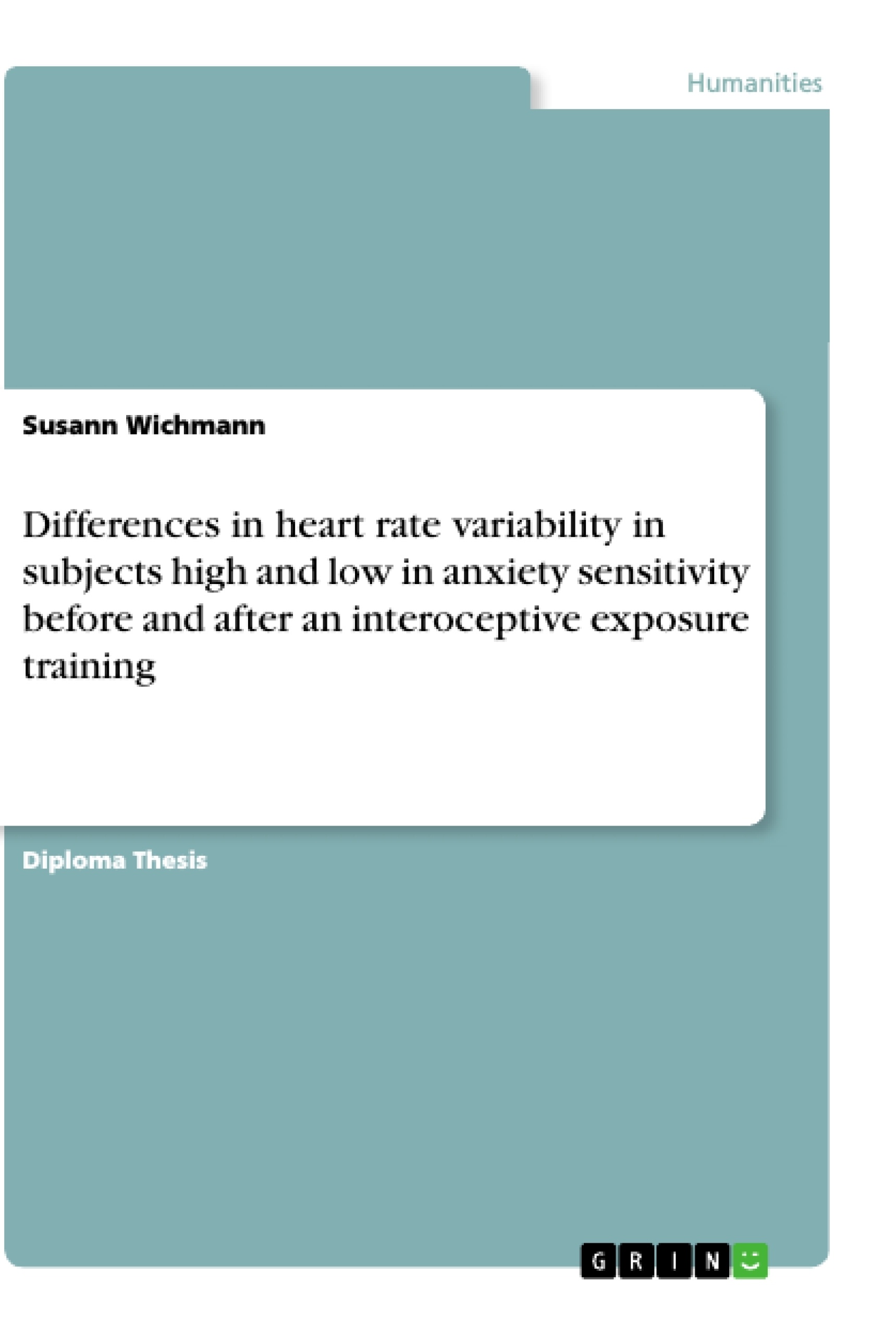Reduced heart rate variability (HRV) has proved to be an independent risk factor for cardiac emergencies. The present study aimed to evaluate differences in HRV in healthy volunteers high or low in anxiety sensitivity (AS) and potential changes in HRV following an interoceptive exposure (IE) training. We aimed to identify subject features that are associated with potential changes in HRV. Methods: Data were obtained in five subjects high and five subjects low in AS (aged 19 to 23).
ECG recordings were conducted in supine position in a mock scanner environment during three experimental conditions. Recordings were repeated after three to seven days of IE training. The square root of successive R-R- interval differences (RMSSD) was calculated for HRV assessment. Potential correlations between subject features and change in HRV were tested with Spearman’s rank correlation. Results: No significant HRV differences between subjects high and low in AS in any of the experimental conditions were observed, neither before nor after the IE training. On a descriptive level, subjects high in AS showed lowered HRV compared to subjects low in AS before IE. After IE, subjects low in AS demonstrated increased HRV, while subjects high in AS showed decreased HRV measures. Correlation analyses revealed no significant associations.
Conclusion: Descriptive results indicate that there are AS-related differences in HRV, with subjects high in AS showing lowered HRV as hypothesized. Following IE, subjects low in AS showed an increase in HRV, while a decrease occurred in subjects high in AS. The mechanisms of IE require further investigation. If replicated in a larger sample and with adequate study design, IE could prove to lower individual risk for cardiac complications by increasing HRV. Future design implications are discussed.
Inhaltsverzeichnis (Table of Contents)
- Abstract
- Introduction
- Objective
- Health stability through heart rate variability
- Relevance of heart rate variability assessment to pathological anxiety
- A focus on interoceptive exposure
- Methods
- Procedure
- Measures
- Clinical assessments
- ECG Recording
- Functional MRI data acquisition
- Experimental procedures
- IE training
- Cardiac symptom provocation task
- Data preprocessing and analysis
- ECG data
- Functional MRI data
- Statistical analyses
- Results
- Sample characteristics
- Group comparison of heart rate variability
- Change in heart rate variability
- Characteristics associated with change in heart rate variability
- Discussion
- Group comparison of heart rate variability
- Change in heart rate variability
- Characteristics associated with change in heart rate variability
- Additional observations
- Study limitations
- Conclusion and perspective
- References
Zielsetzung und Themenschwerpunkte (Objectives and Key Themes)
This diploma thesis investigates the differences in heart rate variability (HRV) between individuals high and low in anxiety sensitivity (AS) before and after an interoceptive exposure (IE) training. The study aims to explore the impact of IE on HRV, specifically examining how HRV changes in response to the training in individuals with varying levels of AS.
- Heart rate variability as a marker of health stability
- The role of anxiety sensitivity in influencing HRV
- The effectiveness of interoceptive exposure training in modifying HRV
- The impact of IE on the relationship between AS and HRV
- The potential clinical implications of the findings for anxiety disorders
Zusammenfassung der Kapitel (Chapter Summaries)
The introduction provides a comprehensive overview of HRV and its relevance to health, particularly in the context of anxiety disorders. It discusses the concept of AS and its influence on HRV, highlighting the importance of interoceptive exposure as a therapeutic intervention. The methods section details the study design, participants, measures, and data analysis techniques employed. Results present the findings regarding HRV differences between AS groups before and after the IE training. The discussion section interprets the findings, drawing connections between HRV, AS, and IE. It also explores the clinical implications of the results and acknowledges study limitations.
Schlüsselwörter (Keywords)
This thesis focuses on the key concepts of heart rate variability, anxiety sensitivity, interoceptive exposure, and their relationship to anxiety disorders. The study investigates the impact of an interoceptive exposure training program on heart rate variability in individuals with varying levels of anxiety sensitivity, providing insights into the mechanisms of action and potential clinical applications of this intervention.
- Citation du texte
- Susann Wichmann (Auteur), 2008, Differences in heart rate variability in subjects high and low in anxiety sensitivity before and after an interoceptive exposure training, Munich, GRIN Verlag, https://www.grin.com/document/489363



